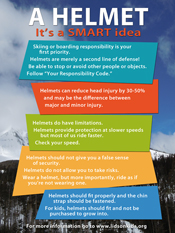 |
||
 |
 |
|
![]()
|
Layering
• The Code • Helmets • Conditioning • Check List • Layering •
The beauty of layering is that you can shed and add clothing as conditions or your exertion levels change. Thanks to new high-tech fabrics, personal climate control is now a reality as body-warmed air is trapped between layers of clothing while moisture vapor from perspiration is allowed to escape. A layering system usually includes three components.
It's important to keep several things in mind as you consider the numerous styles and fabrics available for each layer.
Additional variables to consider include your fitness level, your body type, the activity you'll be doing, and where you'll be doing it. Do you chill easily? Sweat a lot? Highly aerobic activities such as cross-country skiing and running require very different clothing systems from sports such as snowboarding and downhill skiing, in which your energy output constantly fluctuates. And if you're heading into the backcountry or will be far from a heated shelter for any extended period, your clothing will be as important as any piece of equipment you have. It can literally mean the difference between life and death. The weather, of course, is one of the most significant factors in what you decide to wear. Heeding the weather forecast can help ensure an enjoyable excursion. Ignoring weather can make you rue the day you first strapped on skis or boards. And even if you've checked the weather report, you should always be prepared for unforeseen changes, since weather, especially in the mountains, can be very unpredictable. • The Code • Helmets • Conditioning • Check List • Layering •
|
Email us at info@pacificrimalliance.org
Contents of this site Copyright © 1997-2019 by Pacific Rim Alliance. All rights reserved.
Site designed & maintained by Graphic Dezignz. Last updated October 17, 2017.
 |
 |
Skiing is a Dance in which the Mountain always Leads





